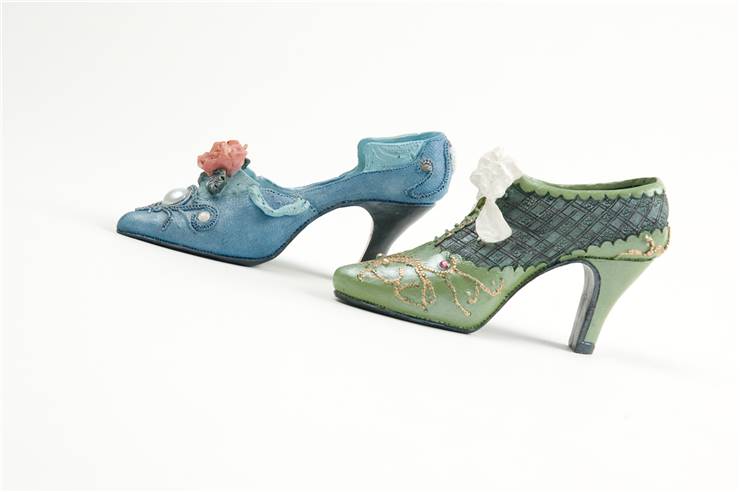Timeline of High-heeled Shoes
200 A.D. – Roman theatre actors preferred to wear platform sandals called kothorni. They had soles made from wood or cork.
1533 – First recorded mention of modern shoes with high heels comes from the 1533 when Italian noblewoman bride Catherine d’Medici came to the French Court wearing the newly adopted fashion from Renaissance Italy. From that moment on, high heeled shoes became popular in France, often signifying wealth and status, as well as psychological support to shorter people (Catherine herself was very short during her arrival in France at the age of 14).
1553 – Queen Mary I of England (often called "Bloody Mary") regularly used high heeled shoes, speeding their popularity among both women and men of England. This trend continued to be popular until 19th century when high heels become fashion accessories of only woman.

1560s – Women from Italy, France and Spain gain affection toward choppiness, shoes that had pedestals made from wood or cork up to 24 inches tall.
1660 – King Louis XIV introduced fashion of heeled shoes (up to 5 inches) that were decorated with various designs of nature and history (often miniature battle scenes). No one was permitted to enter his court without wearing one pair painted in red.
1745 – On the court of Louis XV, tiny Madame de Pompadour popularized shoes with high and narrow heels.
1793 – After the events of French Revolution, shoe heels reduced to record low size. Newly ruling class viewed high heeled shoes as a symbol of decadent wealth. Heels of maximum 2 inches remain in use during 18th and 19th century.
1840 - English Queen Victoria tried on her first pair of boots designed for females. They soon became very popular across Europe.
1888 – First high heel factory opens in New York, diminishing the influence of French made female shoes in North America.
1904 – British shoe fashion line of court (pump) shoes reached North America.
1955 – Designer Roger Vivier created extremely popular Tall "stiletto" heel for woman shoes while he worked for Dior.
